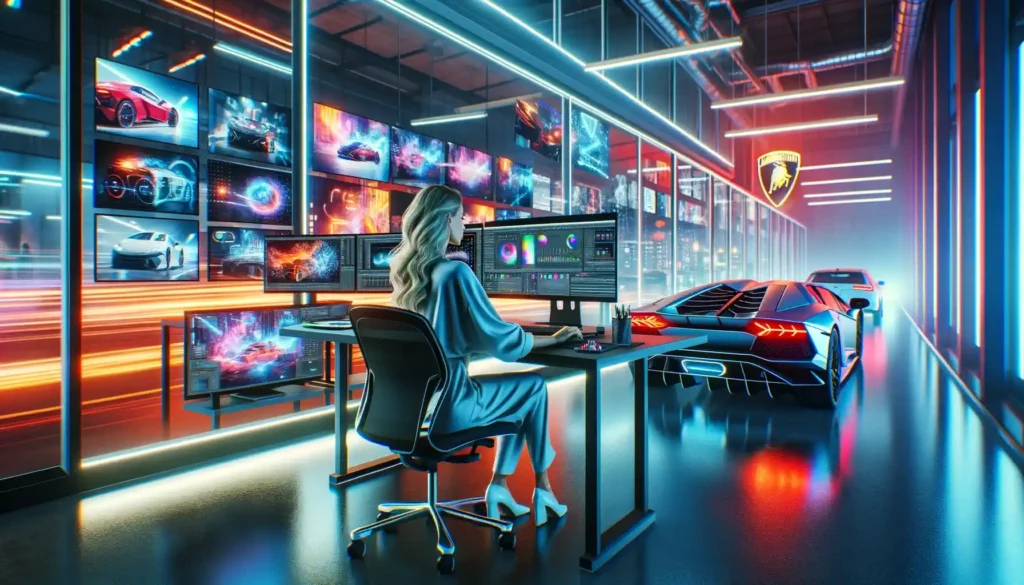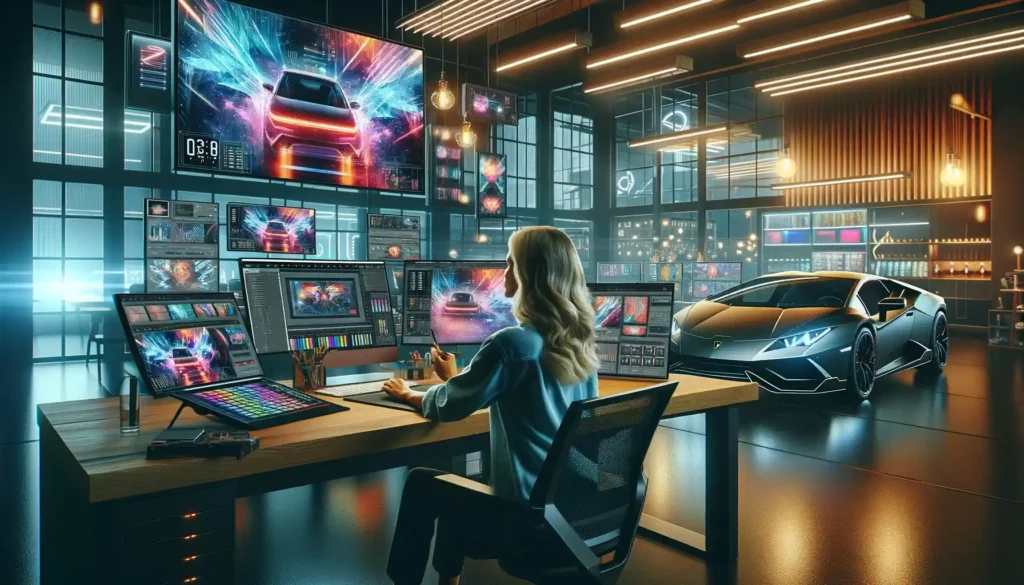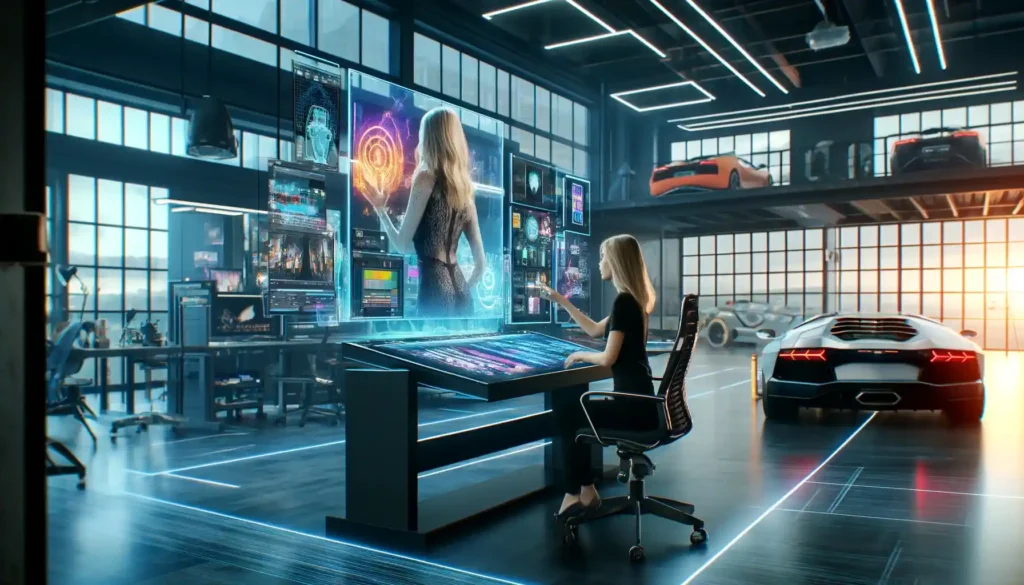How to Boost E-Commerce Conversions with Motion Design Animations. Engaging consumers and showcasing your product has become more challenging to achieving success. High-quality motion design animations have emerged as a potent tool in captivating audiences and boosting conversions.

This comprehensive guide explores the strategic incorporation of animation into e-commerce platforms to enhance user experience, increase engagement, and ultimately drive higher sales.
The Role of Motion Design in E-Commerce
Motion design animations bring static environments to life, making the online shopping experience more dynamic and interactive. They serve multiple purposes—from highlighting product features and benefits more vividly to guiding users through a seamless journey, enhancing their understanding and interaction with the product.
Advantages of Using High-Quality Animations
Increased Engagement: Motion graphics capture attention quickly, keeping potential customers engaged longer, which can lead to deeper interest in the product offering.
Enhanced Product Presentation: Animations allow for a detailed presentation of products, showing how they function in real-life scenarios, which can help reduce the ambiguity often associated with online shopping.
Improved User Experience: Well-designed animations can simplify navigation and make the learning curve of your website more intuitive, leading to improved user satisfaction.
Higher Conversion Rates: By effectively demonstrating product use and benefits through animation, businesses can influence purchasing decisions positively, thereby increasing conversion rates.
Crafting Effective E-Commerce Animations
To leverage the full potential of motion design, it’s essential to focus on several key aspects:
Clarity and Purpose: Each animation should have a clear purpose, whether it’s to explain a product feature, showcase a product in use, or guide the user through the purchase process.
Quality and Professionalism: High-quality, professionally designed animations reflect the brand’s commitment to quality, enhancing consumer trust.
Optimization for Speed and Responsiveness: Animations must be optimized to load quickly and perform smoothly across all devices and platforms to prevent negatively impacting the user experience.
Integration with Overall Branding: Animations should align with the brand’s visual identity and overall marketing strategy to maintain consistency and strengthen brand recognition.
Best Practices for Implementing Animations in E-Commerce
Homepage Highlights: Use animations on the homepage to grab attention and direct visitors to featured products or ongoing promotions.
Product Demonstrations: Create short, informative animations that demonstrate how your product works, focusing on unique features that set it apart from competitors.
Interactive Tutorials: Incorporate interactive animations that guide customers on how to use products, which can be particularly effective for complex or new tech gadgets.
Customer Journey Enhancement: Utilize subtle animations for background elements and transitions to create a smooth and enjoyable navigation experience throughout the customer journey.
Measuring the Impact of Animations on Conversions
To truly understand the effectiveness of animations in your e-commerce strategy, it’s crucial to measure their impact on key performance indicators (KPIs) such as:
- Bounce Rates: Monitor whether animations are engaging enough to keep visitors on your page longer.
- Engagement Metrics: Analyze how interactions with animations affect the overall engagement on your site.
- Conversion Rates: Track changes in conversion rates after implementing animations to see if they directly contribute to sales increases.
- Customer Feedback: Collect and evaluate customer feedback specifically regarding their experience with the animations.
Elevating E-Commerce: Showcasing Products with 3D Motion Design and Insights from Top Brands

E-commerce brands are constantly seeking innovative methods to showcase their products and stand out in a saturated market. 3D motion design has emerged as a transformative tool for presenting products in a dynamic, engaging, and highly visual manner. This article explores the strategies for effectively using 3D motion design in e-commerce and highlights case studies from top brands that have successfully leveraged this technology to enhance their online presence and sales.
Understanding 3D Motion Design in E-Commerce
3D motion design involves creating three-dimensional graphics that are animated or moved in a way that is visually appealing and informative. For e-commerce, this can mean anything from rotating images that show products from various angles to detailed animations that demonstrate how a product works or fits into the consumer’s life.
Benefits of 3D Motion Design for Product Showcases
- Enhanced Visualization: 3D motion design helps customers visualize the product more realistically, providing a better sense of size, design, and functionality.
- Increased Engagement: Dynamic and interactive presentations capture attention more effectively than static images, increasing the likelihood of conversion.
- Improved User Experience: Interactive 3D designs can make the shopping experience more enjoyable and intuitive, encouraging longer site visits and repeat customers.
- Competitive Edge: Offering a cutting-edge visual experience can set a brand apart from competitors, positioning it as a leader in innovation.
How to Implement 3D Motion Design in E-Commerce
- Start with a Goal: Define what you want to achieve with 3D animations—whether it’s increasing engagement, explaining complex products, or enhancing the visual appeal of your site.
- Focus on Key Products: Implement 3D motion design for your flagship or most complex products where visualization can significantly impact buyer decisions.
- Ensure Quality and Relevance: High-quality, well-designed animations that accurately reflect the product and its uses are crucial for maintaining professionalism and effectiveness.
- Optimize for Performance: Ensure that your 3D animations are optimized for fast loading times and smooth performance across all devices.
- Integrate with User Journey: Embed animations strategically throughout the customer journey to guide and inform potential buyers without overwhelming them.
3d Product Showcases Case Studies from Top Brands

Revolutionizing Retail: Apple’s Journey into 3D Product Visualizations
Approach: Apple utilizes 3D animations to showcase its electronic products, emphasizing sleek design and sophisticated technology. Animations often feature product assembly layer by layer, highlighting technological innovations and building quality.
Outcome: The detailed and high-quality animations contribute to Apple’s image as a premium brand and help consumers appreciate the value of the innovations, thus justifying the premium price point.
Nike’s Winning Strategy: Enhancing E-Commerce with 3D Motion
Approach: Nike uses 3D motion graphics to demonstrate the features of their footwear and apparel. Their animations often focus on the materials and design technology that provide athletic performance benefits.
Outcome: The animations enable customers to understand the science and technology behind the products, increasing their confidence in the product’s value and boosting sales.
IKEA
Approach: IKEA offers an interactive 3D visualization tool for furniture that allows customers to see how products will look in their home environment, which helps in decision-making.
Outcome: This use of 3D design technology has not only increased customer engagement but also decreased return rates as buyers have a clearer expectation of the product prior to purchase.
Rolex in Rotation: The Impact of 3D on Luxury Watch Marketing

Rolex, a name synonymous with luxury and precision in the world of high-end watches, has embraced 3D technology to elevate its marketing strategies. This comprehensive analysis delves into how Rolex has incorporated 3D visualization into its marketing efforts, the technology behind it, the benefits derived, and the broader implications for luxury watch marketing.
The Shift to 3D Visualization
In the digital age, luxury brands like Rolex face the challenge of presenting their high-value products in ways that capture the exquisite detail and craftsmanship that define them. Traditional photography and video have limitations in conveying the full experience of a Rolex watch, from its meticulous mechanics to its elegant design. Recognizing these challenges, Rolex turned to 3D visualization technology to bridge the gap between physical and digital customer experiences.
Technology Driving the Innovation
Rolex utilizes advanced 3D rendering and animation technology to create highly detailed and interactive models of their watches. This technology allows for:
- High-Resolution Visualization: Every component of a Rolex watch can be explored in high definition, revealing details that are difficult to capture with standard photography.
- Interactive Features: Customers can interact with the watch models online, rotating them to view from any angle, zooming in to examine intricate details, or simulating the watch’s mechanical movement.
Benefits of 3D Marketing for Rolex
- Enhanced Product Presentation: 3D technology allows Rolex to showcase their watches in unparalleled clarity, highlighting the precision engineering and luxury aesthetics that are hallmarks of the brand.
- Increased Engagement: Interactive 3D models keep potential customers on the website longer, increasing engagement and deepening their interest in the products.
- Improved Online Experience: By providing a near-tangible interaction with their watches, Rolex enhances the overall customer experience, bridging the gap between online browsing and visiting a physical store.
- Broader Reach: 3D visualizations make the detailed exploration of Rolex watches accessible to a global audience, transcending the limitations of geographic location and physical store visits.
Case Studies of Successful 3D Campaigns
Rolex has launched several successful campaigns utilizing 3D visualization. One notable example is the introduction of a new watch model, where Rolex created an immersive online 3D experience. This allowed customers to explore the watch from every angle and simulate wearing it on their wrist through augmented reality (AR). The campaign led to a significant increase in online engagement and contributed to a surge in pre-orders.
Customer Response and Feedback
Feedback from Rolex customers indicates a high level of satisfaction with the 3D viewing options. Customers appreciate the ability to closely inspect the craftsmanship and detail of the watches online, which has proven particularly valuable for those unable to visit a Rolex boutique in person. Additionally, the interactive element of the 3D models has been praised for its ability to replicate the physical experience of handling a Rolex watch.
Future Trends in Luxury Watch Marketing
Rolex’s adoption of 3D technology signifies a broader trend among luxury watchmakers to incorporate advanced digital tools into their marketing strategies. As technology continues to evolve, we can expect to see more luxury brands adopting 3D visualization, AR, and virtual reality (VR) to offer even more immersive and interactive customer experiences.
Conclusion
Rolex’s integration of 3D technology into its marketing efforts represents a significant step forward in the luxury watch industry. It not only enhances the online consumer experience but also sets a new standard for how luxury products can be presented and marketed in the digital realm. As Rolex continues to innovate within this space, the impact of 3D on luxury watch marketing is likely to grow, influencing how luxury brands engage with their clientele worldwide.
Measuring Success and Continuous Improvement
- Track Engagement Metrics: Monitor how 3D animations affect time on site, bounce rates, and interaction rates.
- Analyze Sales Impact: Measure conversion rate changes and product return rates to assess the direct impact on sales.
- Gather Customer Feedback: Regularly collect and review customer feedback specifically related to the 3D features to adjust and improve the offerings.
Amazon’s Innovation Lab: 3D Product Previews Transforming Online Shopping
Amazon, a global leader in e-commerce, has consistently set benchmarks for innovation in online retail. One of the most significant advancements in enhancing the consumer shopping experience is the integration of 3D product previews. This feature allows customers to view products from multiple angles and in different environments, vastly improving their ability to make informed purchasing decisions. This article delves into how Amazon’s Innovation Lab has developed and implemented 3D product previews, the technology behind it, its impact on consumer behavior, and the overall transformation in online shopping.
The Genesis of 3D Product Previews
The inception of 3D product previews at Amazon stemmed from the need to bridge the gap between the tangibility of in-store shopping and the convenience of online shopping. The primary challenge online shoppers face is the inability to physically interact with products. Amazon’s Innovation Lab focused on leveraging 3D imaging technology to simulate a physical shopping experience in a digital realm, aiming to enhance user engagement and confidence in their purchases.
Technology Behind the Innovation
Amazon’s 3D product previews are powered by advanced imaging technology and sophisticated software algorithms that create high-fidelity 3D models of products. These models are constructed from numerous high-resolution photographs of a product taken from different angles. The images are then stitched together using photogrammetry and 3D modeling techniques to create a seamless 3D representation that users can manipulate and view on their screens.
Features of 3D Product Previews
- Rotation and Zoom: Customers can rotate products 360 degrees and zoom in to examine details like texture and color, which are crucial for products like electronics, apparel, and furniture.
- Contextual Visualization: Some categories allow customers to place 3D models of the products in different virtual environments. For instance, a customer can visualize how a sofa would look in their living room.
- Color and Configuration Options: Shoppers can also change color options and configurations of the products in real-time, enhancing the customization experience.
Impact on Consumer Behavior
The introduction of 3D product previews has significantly altered consumer behavior in several ways:
- Increased Confidence: Shoppers are more confident in their purchase decisions because they have a better understanding of what they are buying.
- Reduced Return Rates: Enhanced product understanding leads to more satisfied purchases, thus reducing the frequency of returns.
- Longer Engagement Times: Interactive 3D previews tend to engage customers longer on product pages, which correlates with higher likelihoods of making a purchase.
Case Studies and Success Stories
Amazon has reported considerable success with the implementation of 3D previews. For example, in the furniture category, products featured with 3D previews showed a noticeable increase in conversion rates compared to those without. Customer reviews have also highlighted how 3D previews provided a more accurate sense of the product dimensions and fit, which is particularly valuable for online furniture shopping.
Future Directions
Amazon continues to refine and expand its 3D preview capabilities. The next steps involve integrating augmented reality (AR), allowing customers to use their mobile devices to see how products would physically appear in their space. This move is expected to further diminish the gap between online and physical retail experiences.
Incorporating high-quality 3D motion design animations into an e-commerce conclusion
How to Boost E-Commerce Conversions with Motion Design Animations. Utilizing 3D motion design in e-commerce provides a significant opportunity to enhance product presentation, improve customer experience, and ultimately increase sales. By learning from leading brands and continuously optimizing their 3D visual strategies, e-commerce businesses can effectively stand out in a competitive digital marketplace.
Incorporating high-quality motion design animations into an e-commerce platform can transform the shopping experience, making it more engaging and informative. When executed correctly, animations not only enhance the aesthetic appeal of a website but also play a crucial role in driving conversions. As technology and consumer expectations evolve, the creative use of motion design will continue to be a key differentiator in the competitive e-commerce landscape. By adhering to best practices and continually measuring their effectiveness, businesses can ensure that their use of animations remains a powerful tool for growth and customer satisfaction.